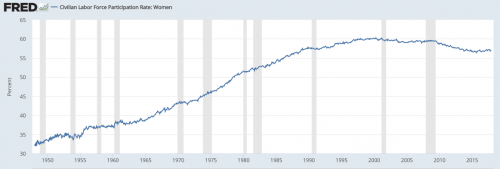When you look at what the US has gone through over the last decade, in terms of the job market, what stands out is the total decimation of jobs during the Great Financial Crisis. From early 2008 until early 2010, we went through the worst job loss in 60 years. Not since the 1940s had the proportion of people who lost their jobs been so large from one year to the next.
But something else stands out too — and that’s demographics. Here’s one statistic: the prime working-age population peaked in 2007 when the last business cycle ended. We’re talking about the number of people in the 25-54 year age range — the people likely to be both out of school and still working before retirement. Even when the jobs data came out on Friday, it showed that we had fewer prime-age working people today than we did at the 2007 peak.

That has to be a drag on growth. If the prime age population is stagnant, or even declining, it’s a lot harder for the economy to grow than if the population is rising. So that explains some of the growth problems we have had this past decade. Now, a lot of this is non-repeatable because of the ‘Baby Bust’ Gen-Xers working their way through into the belly of our prime age population. This is a generation that is uniquely small because of the advent of the birth control pill and the uptick in age of first-time mothers. These phenomena will not be repeated.

Even so, indicative of yet another demographic challenge, the civilian labor force participation rate for women maxed out in 2000. It has declined a few percentage points since then. For the population as a whole, as of December 2017, even after eight years of recovery, the labor force participation rate was still only 79.1%, whereas it was as high as 80.5% at the beginning of 2007. If we go all the way back to when the female participation rate began declining in 2000, we can see overall participation at 81.9%. So we are about 3 percentage points down from the peak.














Leave A Comment